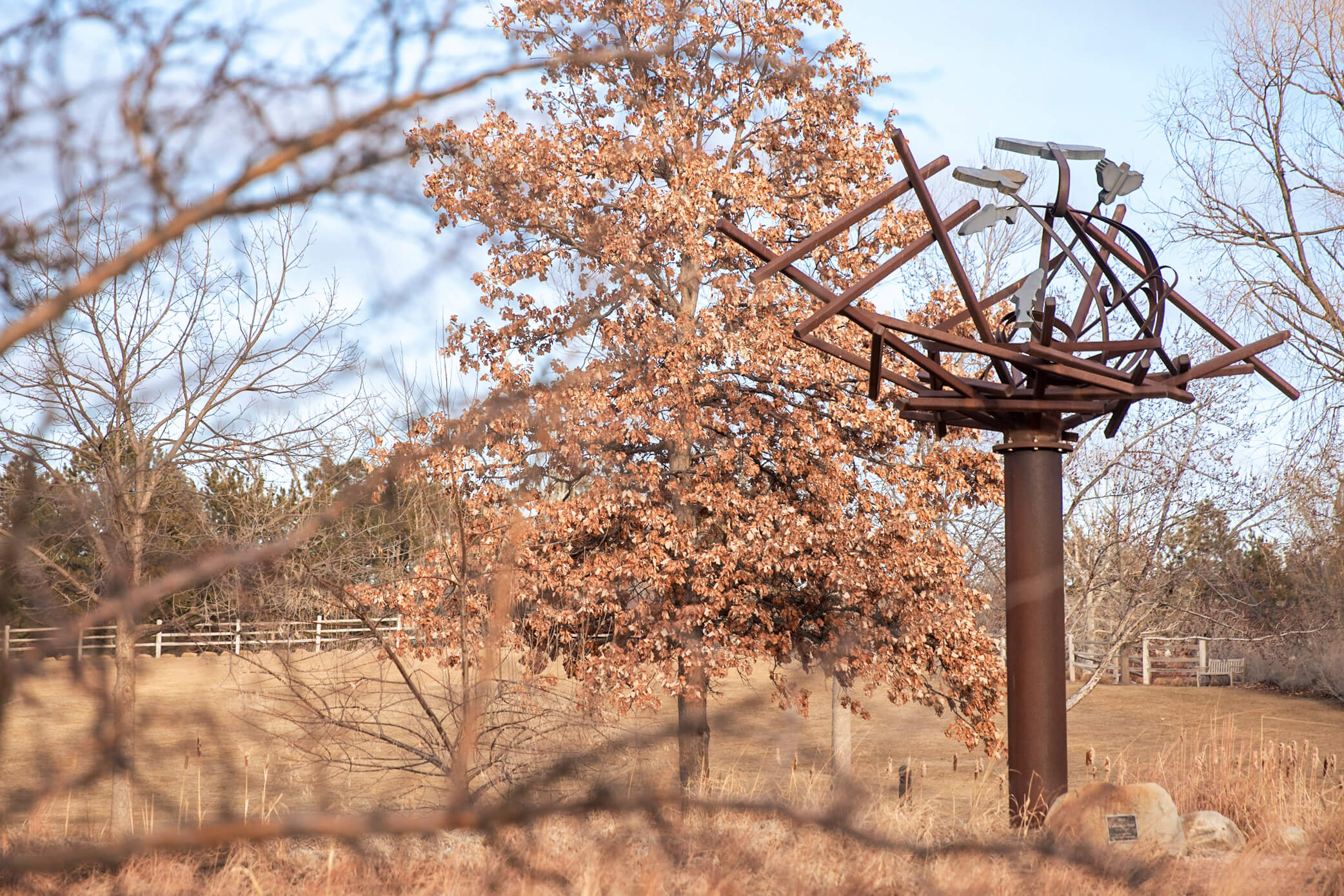The Songbird Garden is part of the “Save the Songbirds” initiative, designed to save one million songbirds by creating 50,000 acres of habitat nationwide. It is designed to improve the natural food supplies and habitat available to both resident and migratory bird species that frequent Hudson Gardens. Supplemented by nesting boxes and bird feeders, the Songbird Garden is planted with bird-friendly plants that offer food, water, cover, and nesting sites for songbirds year-round.
Creating a bird-friendly habitat is possible in any landscape, regardless of size. The essential elements of a bird habitat are food, water, cover, and a place to raise young.
Food
Food can come in the form of plants or feeders. Feeders provide only a relatively small portion of the nutrition birds need. Adding nectar-filled flowers and plants with heavy fruit and seed production can dramatically boost the habitat value of your landscape.
When choosing plant material, try to select native plants. Some non-native plants are great for birds, but in general, native plants are more favorable for the climate and better support their nutritional needs. Many native plants will grow with minimal use of water, fertilizers, and pesticides because they have adapted to the local weather conditions, including temperature, soil, and rainfall. Further, they attract native insects (in other words, bird food!) and have developed defenses to many diseases. And finally, native plants provide the most easily digested, easily swallowed food with high nutritional content. Native plants are also n:,ore likely to produce fruit during times that birds experience the greatest need for food.
Water
Birds require water for drinking and bathing year-round. If you do not have a natural water feature in your landscape, consider adding one that is kept clean and filled with water. Shallow pools of water with sloped sides and textured bottoms (to prevent slips) .will allow birds to most easily access the water.
Shelter, Cover, and Nesting Sites
Be sure to provide ample opportunities for shelter and cover, which can double as nesting sites for some types of birds. Each species has its own preferences for nesting sites: some prefer the ground, whereas others choose trees and shrubs. Evergreens are good choices because they provide a dense, protective cover that offers shade in the summer and shelter from harsh winds in the winter. You can also use nesting boxes but be sure to keep them ample distance away from your feeders.
A few other tips on creating an ideal backyard bird habitat:
- Looks aren’t everything. Choose plants for their function rather than appearance. By selecting your plants carefully, you can create beautiful habitat gardens that are both functional and beautiful.
- Thank you berry much. Plant trees and shrubs with heavy fruit production. Even better, try to select a combination of plants that will offer year-round fruit production. Birds prefer red and blue-colored berries.
- Skip the grass. Turf has little wildlife value. Plus, the less grass you have, the more area you can use for bird-friendly plants. Low-growing perennials, native grasses, or ground covers are good alternatives.
- Layer your landscape. Use a combination of trees, shrubs, and perennials to recreate the layers of growth found in many natural environments. Put the tallest plant material in back, and the shortest plant material up front.
- Don’t deadhead. Let plants set seed after they flower so that they can serve as a food source.
- (Leaf) litter is good. Instead of removing piles of raked plant material from your yard, place them under trees and shrubs to provide cover and attract insects.
- Go organic. Utilize non-chemical management methods to tame pests and diseases whenever possible. Herbicides and pesticides can be ingested by birds if they feed on affected insects or plants.


